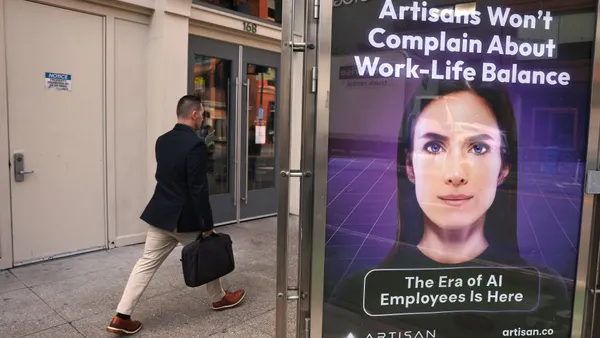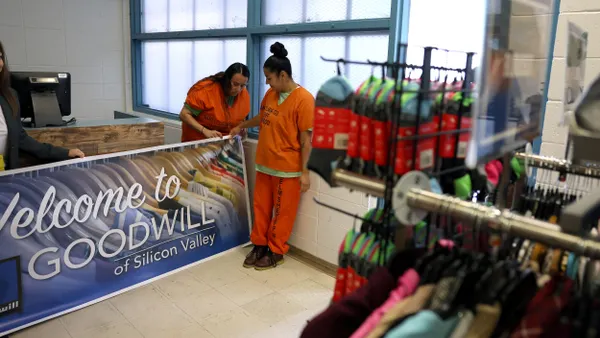There’s rarely a good month for companies to lay off employees, but if there were, January, right after the holidays, wouldn’t make the top choices. And yet, the first month of the year is historically one when many companies restructure, look for ways to reduce costs and ultimately, lay off workers.
Layoffs may be inevitable—after all, ninety-six percent of businesses downsized in 2023 and 92% of companies expect more of the same in 2024. While this is a difficult situation, some companies make it even more painful for employees.
We’ve all heard (or maybe even experienced) horror stories about layoffs. For example, recently, a tech company sent early morning emails to 12,000 employees, letting them know they were being let go. But many employees didn’t check their personal email accounts. It wasn’t until they arrived at work later that day and couldn’t access the building that they realized what had happened.
We can be more thoughtful when laying people off, by avoiding common missteps and providing empathetic exits.
Layoffs aren’t always the solution
When companies determine that layoffs are necessary, they also must also acknowledge the long-term damage a layoff causes.
There’s a breakdown of trust between the company and its employees, a negative impact on the laid off employees’ finances and health, heightened anxiety from remaining employees, and negative public image.
What’s more, research indicates that although layoffs are usually intended as cost-cutting measures, companies that reduce staff don’t always see that performance boost. Furthermore, they can have a new problem: layoffs can trigger turnover in employees left behind.
In the past, bad company-employee breakups were limited to word-of-mouth. Now, employees can quickly, easily and virally share their experiences via social media, allowing customers, partners, the public, regulators, unions, and shareholders to form negative opinions about the layoffs, the organization, and its leaders.
Where today’s layoffs go wrong
With many employees working remotely, business leaders may think it’s easier to handle layoffs by email or in a mass Zoom call. But that’s where companies get it wrong, says Jamie Viramontes, CEO of Konnect, a human resources service company. “Companies are taking the remote model too far. People should still be treated with respect and dignity no matter how the company operates.”
Viramontes says the most damaging layoffs occur because of specific reasons:
- Companies aren’t transparent about why layoffs are necessary: Other than the CEO, or executive leadership, often the rest of the company isn’t clear on the reasons for the layoff or cost-cutting measures. Is it because a product line is not performing well? Has the market shifted, and now the company has to shift with it? What’s the reason? Companies get it wrong on communicating the “why.”
- Leaders don’t consider alternatives to layoffs: What other cost cutting measures did the company take before needing to reduce headcount? From temporary employees to work travel or holiday parties, how did the company attempt to decrease costs– and how well did the company share those efforts?
- The layoff selection process is unfair and inconsistent: It’s easy–and human– for leaders to protect the employees that are more visible or favored. However, this approach is often unfair and inconsistent. Laying off the wrong people weakens the business and adds to employees’ mistrust.
- Managers communicate inadequately: Telling someone they’re being laid off isn’t easy. Managers have been schooled to be unemotional and brief in these conversations. But for an employee who is having one of the hardest days in their career, that lack of empathy can feel insulting and disrespectful to their service. There has to be a healthy balance.
- Companies don’t attend to the people left behind: Companies should provide resources and support for the employees laid off and acknowledge It is not business-as-usual for the people left behind. They are grieving for their laid off co-workers, angry with the company about how the layoffs occurred, anxious about how their workloads will be affected and wondering if more cuts are down the road.
The way some companies abruptly dismiss employees indicates that the employees are not valuable. Yesterday, they were part of your workforce, your team, representing your brand. Today, they are strangers who can’t be trusted to be in the building.
Helping employees exit with dignity
Layoffs may be unavoidable, but companies can make a difficult situation a little less damaging by showing empathy throughout the exiting process, Viramontes says. Beyond developing a thoughtful plan that offers information, resources and support to help laid off employees land on their feet, companies need to think about how they carry out that plan. “Are you treating employees with kindness and empathy?” Viramontes asks.
The severance conversation can be filled with landmines. Often, managers need more training in handling these discussions, Viramontes adds. “We see leaders who may have done this before but haven’t done it well, so training and alignment is necessary for every occurrence.”
SHRM suggests basing the conversation on talking points that give a brief overview of facts and provides consistency. (Companies would also give employees written information re-iterating the conversation and resources to review and who to contact for next steps.)
Viramontes says leaders can convey empathy by considering the following:
- Be well prepared. Understand the individual you are laying off and cater your language to best connect with them.
- Don’t sound robotic and scripted. Tone is important and leads to a smoother conversation.
- Don’t overwhelm. Providing resources after the conversation will help people with their transition.
- Allow the person to react. Respond to what you can, but don’t feel the need to address to everything. Oftentimes, people want to be heard.
- Be flexible. Too often, the fear of legal issues clouds the minds of leaders. While it’s important to be cautious, there is often a simple solution to employee needs. Not everything can be a blanket solution.
In addition to attending to the employees who are laid off, employers also need to focus on the ones remaining. “Leaders must communicate to those team members left behind to ensure minimal chaos,” Viramontes said. “Acknowledge that this change has a major impact. Explain what happens next and what current employees can expect in the future.”
A layoff done well
Although no one expects to get an award for their handling of a layoff, when it goes smoothly, people impacted feel they were treated with respect and that the company was thoughtful about their needs. They are more likely to feel their work and time was appreciated.
“It’s more than the business advantages of limiting the damage of a layoff,” Viramontes says. From a business perspective, former employees may still be brand ambassadors or customers. They may even return to work for the company. “Company leaders should show empathy and compassion because it’s the human to human connection that is so critical during a difficult time. Let’s get it right.”









